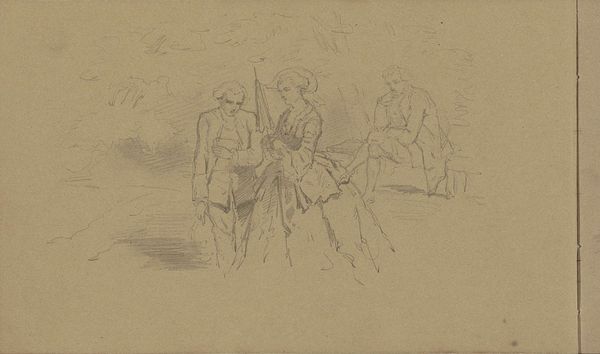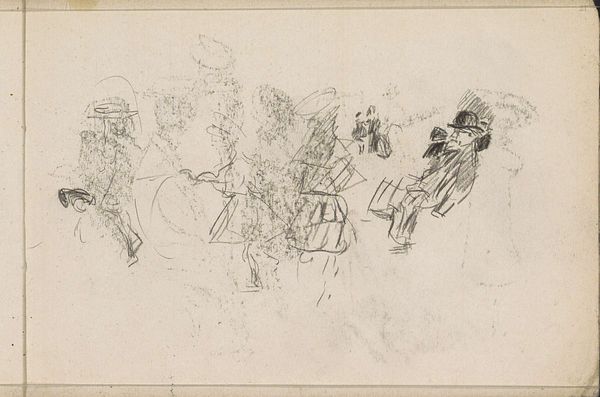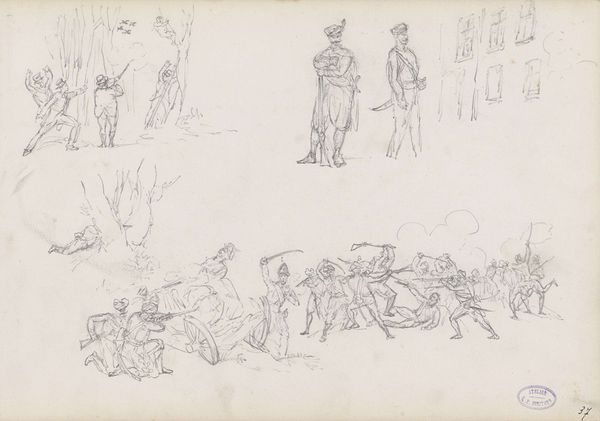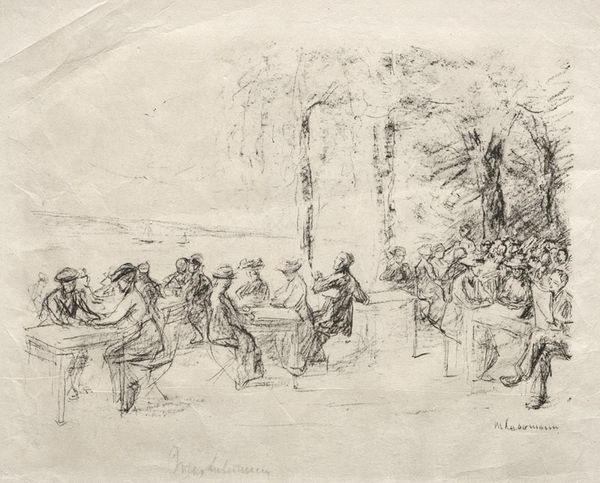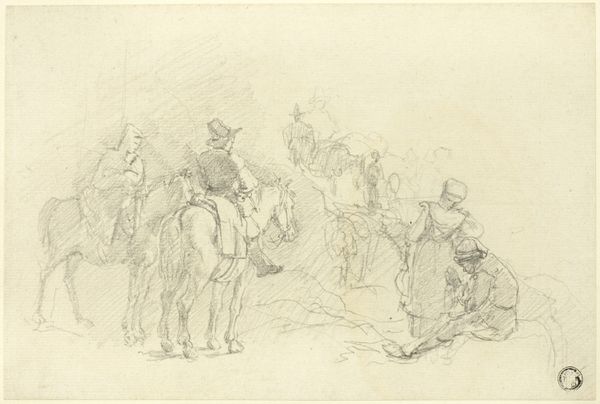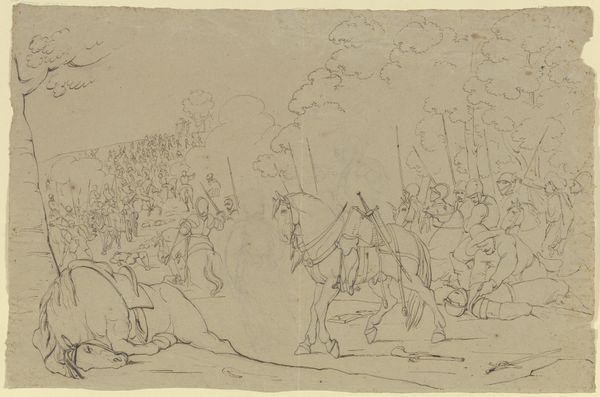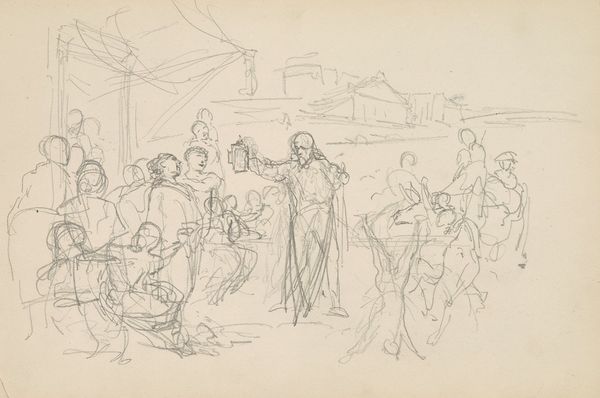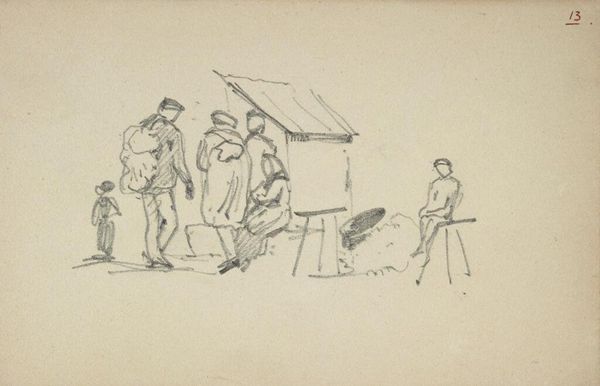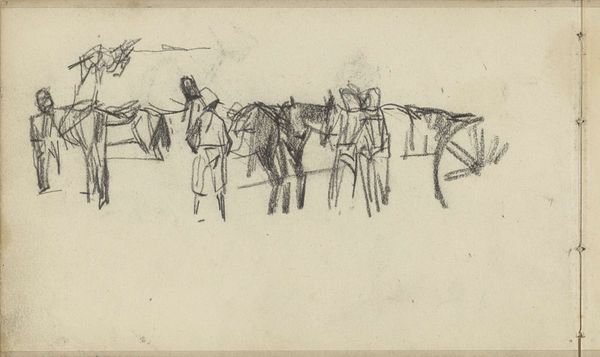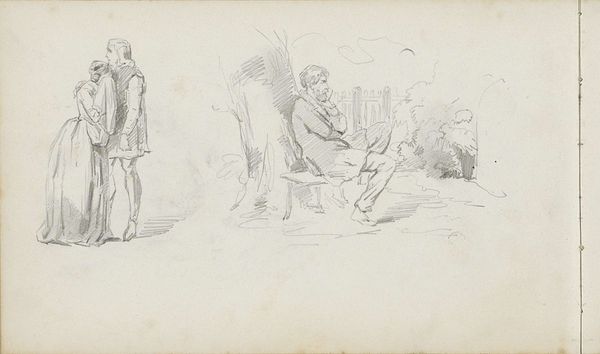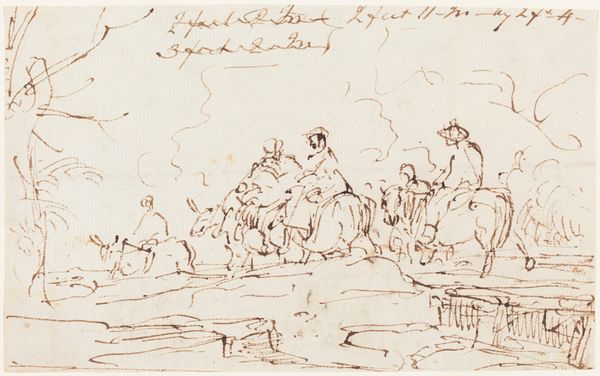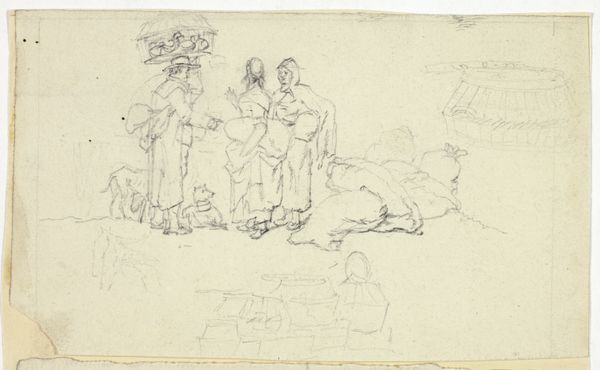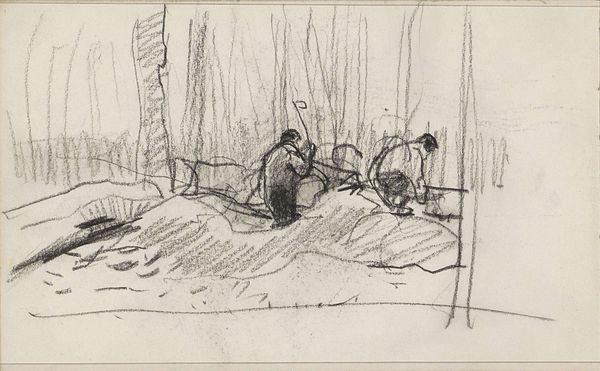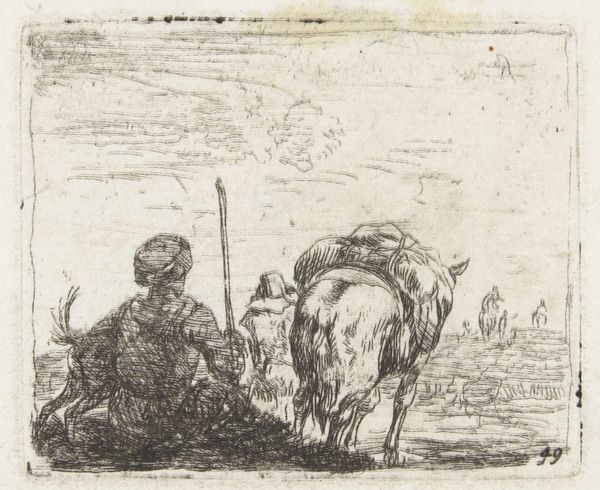
drawing, pencil
#
drawing
#
landscape
#
pencil
#
genre-painting
#
realism
Copyright: Rijks Museum: Open Domain
Curator: Breitner's "Cavalrists on a Country Road," dating from 1881 to 1883, gives us a glimpse into the artist's fascination with urban life—or perhaps here, life just outside the city limits—in the late 19th century. Editor: Immediately, I notice the speed conveyed through the rough, suggestive pencil strokes. There is something incomplete here, immediate; was it sketched in transit? Curator: That's astute. It is made of pencil on paper. Breitner was influenced by the Realist movement, aiming to depict the world as he saw it without romanticizing it. This drawing captures a fleeting moment, the casual encounters in and around the city, without idealized notions of military grandeur. Editor: Right, it looks so effortless. He employs line work in favor of modeling. I wonder, what can this sketch tell us about the means of representing and consuming these urban experiences at the time? Was he mass-producing prints or similar to capitalize off them? Curator: Not mass-produced in the conventional sense, but Breitner was keen on photography and the idea of capturing many moments of everyday life. These interests are visible in the work, perhaps even giving the sketch the feeling of being unfinished. How do you view its relation to labour? Editor: Considering his choice of inexpensive, portable materials—paper and pencil—this was a practical piece to produce but likely aimed for elite customers or at least middle-class viewers interested in 'low-life' scenes. The rapid strokes signify that this was made rather quickly which downplays the labour input compared to formal academic painting, but still the artist captures details of urban modernity that would entice consumers. What social narratives are interwoven within this artwork? Curator: Within that context, it becomes clear that the romantic and even militant notions of military cavaliers are questioned and brought into a more mundane modern social sphere. What emerges, as an intersection of social life and class, complicates historical norms of depicting the military in art and public life, wouldn’t you say? Editor: Absolutely, Breitner allows us to critically examine not just the means by which such images were produced, circulated, and viewed, but he asks us to also consider what exactly it is these pieces represented within specific historical moments. Thank you. Curator: It was an incisive dive into Breitner's choices, illuminating the multiple dialogues embedded in what appears at first as simply an incomplete sketch.
Comments
No comments
Be the first to comment and join the conversation on the ultimate creative platform.
